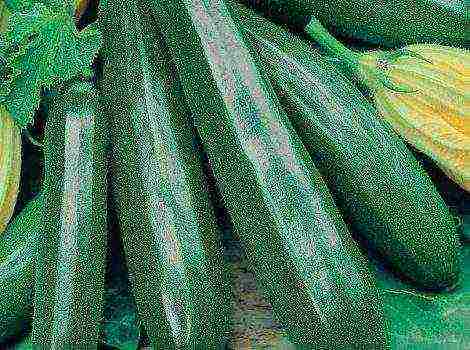Proper cultivation of Spaghetti zucchini
Zucchini is a popular vegetable for most summer residents. Thanks to modern breeders, gardeners have the opportunity to grow vegetable spaghetti. Outwardly, this zucchini does not differ from other varieties, it is distinguished from the total mass by fibrous pulp.
Description and characteristics of the spaghetti zucchini variety
Vegetable rich in minerals, vitamins... Zucchini fruits have a beneficial effect on blood formation, fight cholesterol, and have a diuretic effect. They are used for obesity, diabetes mellitus.
This vegetable is familiar to few, but vegetable growers who have tried this vegetable marrow appreciated it.
The popularization of the variety is justified by a number of advantages:
- excellent drought resistance;
- long shelf life;
- unusual appearance;
- rich taste.
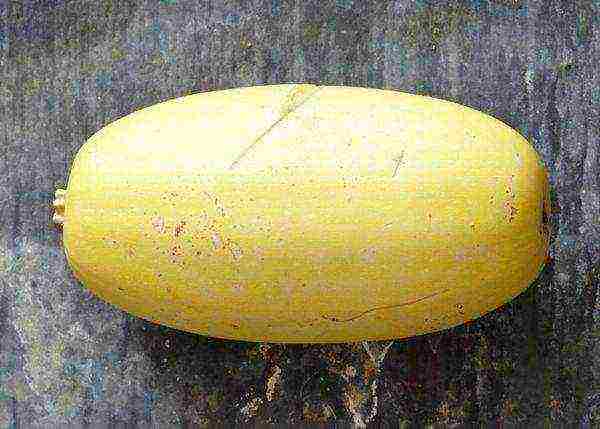
If you cut it in half, you can see the seeds inside, they need to be picked and scraped over the flesh of the squash. The pulp will begin to separate according to the type of vegetable shavings. You might get the impression that the insides of the courgette have been grated for Korean carrots.
Nature gave us an extraordinary-looking vegetable that looks like spaghetti. The peculiarity of this variety is taste is revealed when it is fully ripe... After heat treatment, it acquires an extraordinary taste. Raw vegetable spaghetti is added to salads. Thanks to its excellent lightness, the culture is ideally preserved until spring.
Medium late - ripening occurs later 95-130 days... Their length reaches 30 cm... As it ripens, it changes color from green to yellow. There are varieties of whitish ripeness. The skin is dense, like a pumpkin. Weight from 0.7 to 1.2 kg. Vegetable growers note good transportability. They are grown by seeds, less often by seedlings.
Advantages and disadvantages
Reviews of "spaghetti" are rather mixed. Some praise the excellent taste of a mature vegetable, others like young flesh.
Each grower highlights certain advantages and disadvantages:
- In regions where a short summer is a vegetable does not have time to ripen to the state of "noodles".
- Growing fibrous zucchini does not require complex measures, everything happens as with the cultivation of conventional varieties.
- The bushes love to grow, so it is best to grow them in an elevated position.
- Low yield from 1 sq. meters collect about 5-9 kg per season.
- Due to its characteristics and hard peel, it is stored for a very long time.
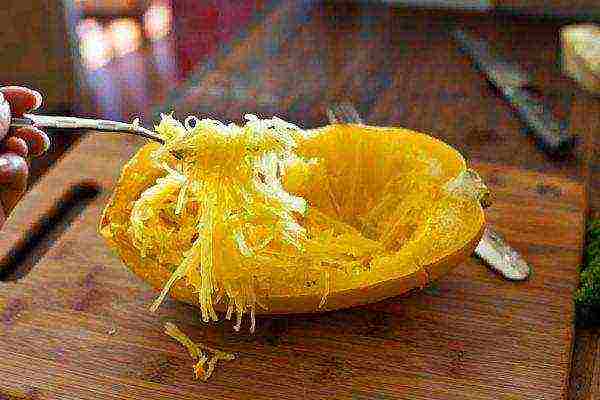
Preparing zucchini seeds for planting
In most cases, the vegetable is grown from seeds that can be purchased from specialty stores. Those who prefer to tinker with seedlings, the seeds are planted in cups. The preparation of seeds and the cultivation of spaghetti seedlings are carried out according to the general rules.
The culture does not impose special requirements, however, some rules must be observed:
- The seeds must be unexpired, until the moment of planting, you need to adhere to the requirements for their storage.
- Seeds can soak for 3-4 days... Moisture will allow them to hatch, for this you need to place the seeds in a damp cloth. So that it does not dry out, it needs to be moistened every day.
- If the spring is not long, seeds are planted in open ground by the end of May. Otherwise, you need to focus on the temperature of the soil, it must be warmed up up to 15 degrees.
- To get a vegetable that is earlier in maturity, you can plant seeds in a greenhouse. Then transplant the seedlings or open the film so that the zucchini grows under natural conditions.
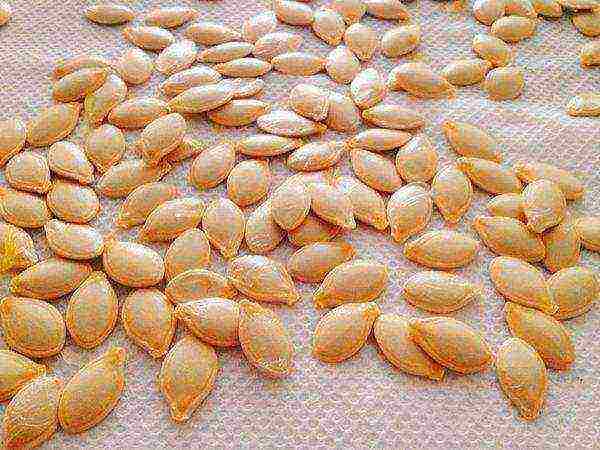
If the origin of the seeds is in doubt, they are better. germinate in advance, in this way you can check for germination.
Preparing the soil for cultivation
On hot days, summer heat and winds have a detrimental effect on the harvest. Therefore, it is necessary to choose a garden bed that is protected from the wind. It is good if fruit trees grow around.
- the land must in advance dug up, loose, fertilized;
- in loam and clogged soil, the culture will develop poorly;
- in addition to properly prepared soil, you need to take care of regular feeding.
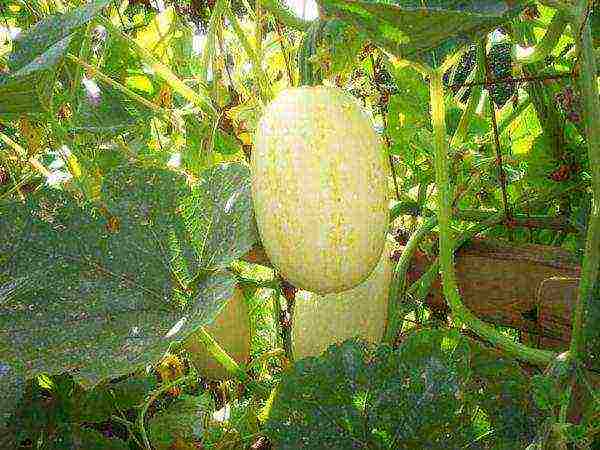
Given the fact that the vegetable ripens for a long time, the bushes need to be provided with nutrients throughout the season. Due to the fact that the bushes grow strongly, the seeds are planted over hills or, conversely, along ditches.
There are cases when they were grown inside barrels... For this purpose, the barrels are covered with fertile soil, and the seeds are sown. This method will save space in the beds.
A barrel braided with zucchini will become an attractive decoration of a personal plot.
Seed planting technology
The bushes give a powerful root system, so the holes are made at a considerable distance from 70-90 cm... Seeds are planted dry or after preliminary germination. Water the hole, put 1-3 seeds there. Sprinkle with earth.
After germination of the sowing, fertilizing is carried out with fertilizers, until this moment they provide regular watering.
Care after landing
Watering a vegetable crop is better in the morning or in the eveningwhen the sun goes down 1-2 times a week... Frequent watering will encourage greenery to grow rather than fruit ripening.
If you water in the heat during the day, you can harm the plant, it can cause burns. Since in most cases, zucchini is grown in holes, watering must be done at the root so that the water does not erode the roots.
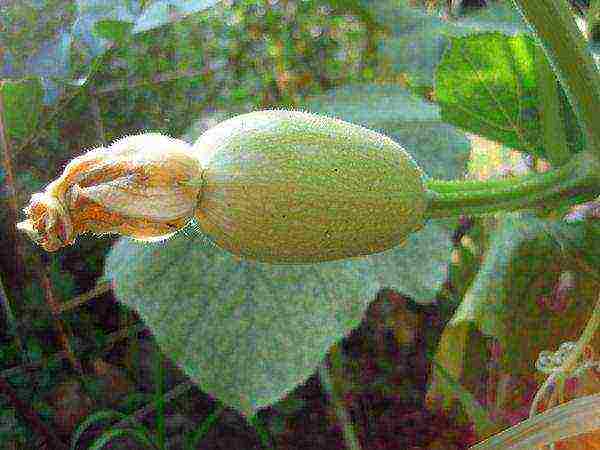
Wet soil after watering loosen up - this procedure will enrich the earth with air, provide breathing for the roots. Spud bushes every 15-20 days. Weeding produced at first, later the bush grows well, weeds usually do not grow under it.
If you pinch the bushes in a timely manner, they will be more neat.
Diseases and their prevention
The most common pest occurs - powdery mildewit usually infects the leaves. White spots (powdery bloom) appear on top. At first, these spots are small, if the disease is not dealt with from the lesions, the leaves die.
Spray with gray colloidal at the rate of 100 g per 10 liters of water. You can use an infusion of mullein 1: 3. The disease can pass from a sick bush to a healthy one, and can be transmitted to other vegetable crops.
Harvesting and storage rules
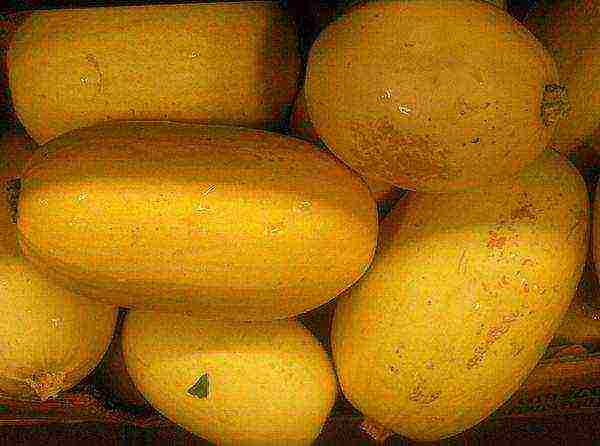
In this regard, zucchini is more similar to pumpkin, this is due to the fact that they are intended for long-term storage, therefore, they sing longer than others.
The first harvest of young zucchini can be obtained after 25-30 daysafter flowering.Of course, they will still be small without a fibrous structure. Some people use them that way.
After 2.5-3 months, if the skin of the vegetable is hard, and a dull sound is heard when tapping, it is time to harvest. It can be stored inside the basement until spring.
It is very good to have several varieties of zucchini on a personal plot, then the dining table will always be varied. According to the requirements of zucchini, spaghetti is an unpretentious culture. Following the recommendations, you can get a good harvest even from a small garden bed. An amazing vegetable will become a favorite in the garden, will delight you with its taste and useful qualities!


